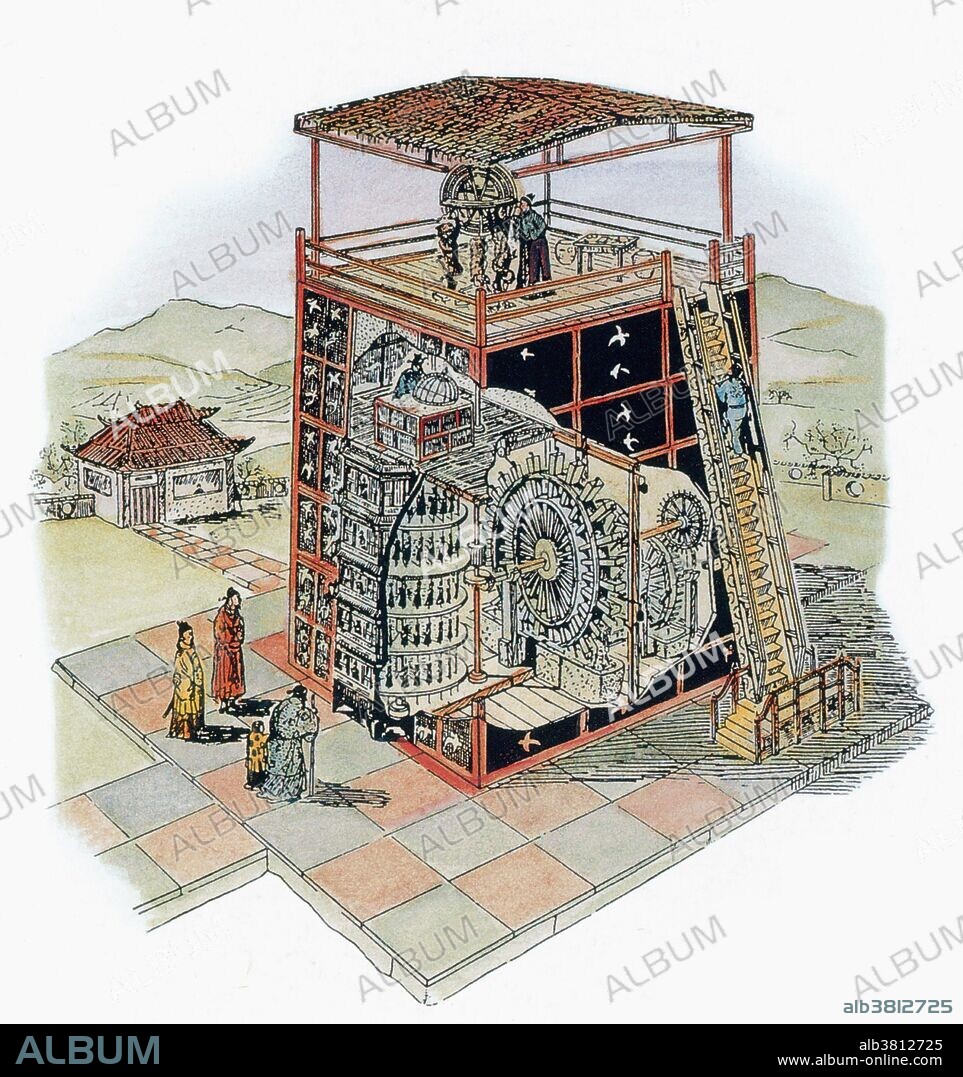alb3812725
Chinese Observatory, 11th Century

|
Ajouter à une autre Lightbox |
|
Ajouter à une autre Lightbox |



Avez-vous déjà un compte? S'identifier
Vous n'avez pas de compte ? S'inscrire
Acheter cette image.
Sélectionnez l'usage:

Titre:
Chinese Observatory, 11th Century
Légende:
Voir la traduction automatique
A clock made by Su Sung, an astronomer, on the order of emperor Ting Zong in 1090 was 30 feet tall and was used to clock the planets and stars, and to keep track of the time. On the top was a spherical astronomical instrument used to measure the stars and driven by the clock's giant water-powered mechanism. Inside the tower was a smaller celestial globe whose movements were the same as the one on the roof and which could be viewed in bad weather or if the one on the roof was crowded. On the front of the tower was a pagoda-like structure of five floors, each housing numerous wooden puppets. The puppets would appear about every quarter of an hour day and night, and would play drums, bells, gongs, and string instruments. All the puppets' movements were controlled by the clock's machinery. The clock was powered by a huge water wheel with scoops on the ends of each blade. Water dripped into a scoop until it was full, and then the wheel would turn, causing the water in the scoop to be poured out into a basin and the next scoop to progress and start the process all over again. When the wheel turned the puppets would change and so would the astronomical clocks. Su Sung's clock ran from 1090-1126, when it was moved to Peking, were it stood for several more years.
Crédit:
Album / Science Source / New York Public Library
Autorisations:
Taille de l'image:
3310 x 3519 px | 33.3 MB
Taille d'impression:
28.0 x 29.8 cm | 11.0 x 11.7 in (300 dpi)
Mots clés:
 Pinterest
Pinterest Twitter
Twitter Facebook
Facebook Copier le lien
Copier le lien Email
Email
